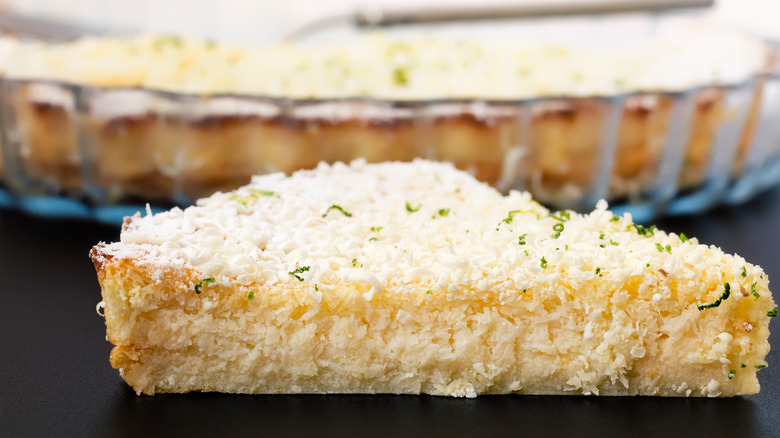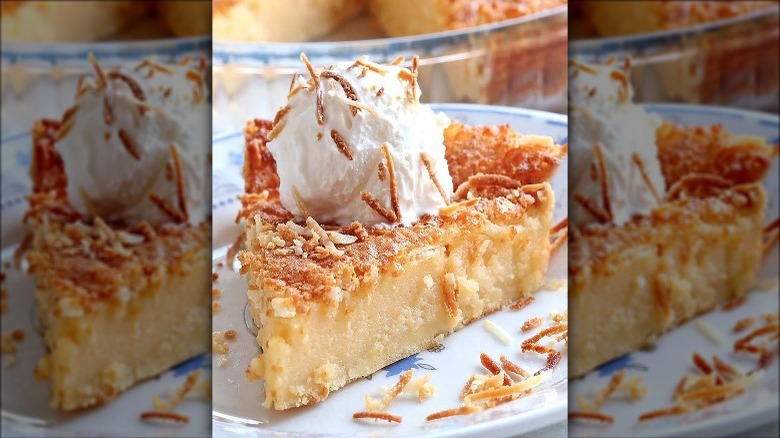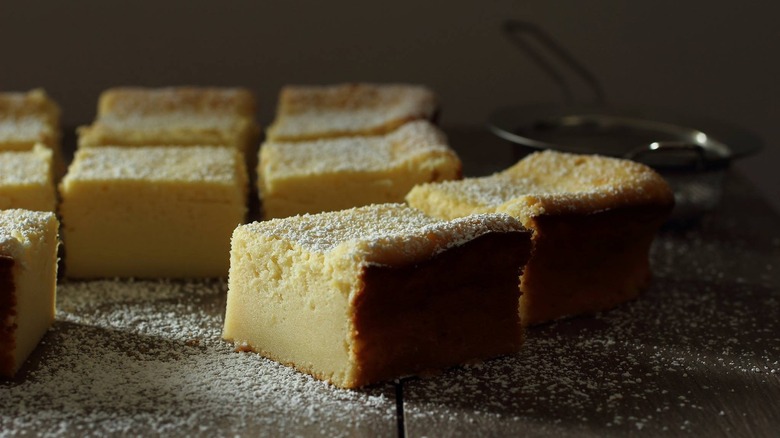Magic Pie: The Mind-Blowing Dessert That Forms Its Own Layers
Some call it impossible custard pie. The French, who claim to have invented it, call it gâteau magique (magic cake). We think the name that makes the most sense for this single batter, wibbly-wobbly, triple-layered dessert is magic pie. It's a pie because the lowest of the three layers that emerge as it bakes is a delicate crust — no rolling or chilling required. It's magic for two reasons: By definition, making magic pie makes the baker a magician (which is always cool), and if any recipe fits the definition of magic ("influencing the course of events by using mysterious or supernatural forces"), it's this one.
Despite its undetermined origins, the forces that create the magic pie's three layers from one batter are not supernatural, but they certainly seem mysterious. Many magic pie recipes don't even require a mixing bowl. Just blend the ingredients and pour the mixture into a greased baking dish. After about an hour of baking, the base will form a solid, delicate crust. The middle will be a soft, silky custard that's just set, and the top layer will be burnished brown with a chewy, cakey texture.
Coconut is the most common flavor of magic pie. The neutral, nutty flavor goes well with the creamy custard. Shredded coconut rises to the top, giving the pie a toasty crunch that contrasts the smooth eggy pie filling in a very complementary way.
Magic pie ingredients and preparation
Magic pie doesn't require specialty ingredients for its impressive triple-layering trick. The recipe calls for just six ingredients: milk, sugar, flour, eggs, melted butter, and vanilla extract. Aside from powdered sugar for dusting and mix-ins like shredded coconut, that's all the ingredients. However, the secret lies more in the preparation than the components.
While the pie is baking, it's setting — like a custard. Water evaporates, proteins bond, and by the end, the mixture will have gone from liquid to solid. Before too much solidification happens, some parts sink to the bottom, and others rise to the top. The cook who understands and controls these processes will have the most successful magic pie. Magic pie batter is pretty loose for a cake because the flour isn't meant to provide structure throughout. Instead, the flour, saturated with milk, butter, and egg, sinks to the bottom of the baking dish and forms the pie's outer crust.
Some magic pie recipes put everything in a blender, and others ask you to whisk separated eggs until they're frothy, but they all emphasize incorporating air into the batter. The air bubbles trapped in the eggs will rise to the top and create the cakey coating along with any bits of coconut or other mix-ins in a process similar to clarifying stock with an egg raft.
Magic pie variations
The original magic pie is a vanilla custard pie, whipped in a way that makes the top almost ethereal. The simplest way to add variety is to change the custard's flavor. Switch the vanilla extract for a different flavor, or add a few spoonfuls of cocoa powder or lemon zest to make your magic pie a symphony of flavors and textures.
Other schisms between schools of magic pie thought are centered on questions of shredded coconut and separated eggs. Not all coconut pies are made in a blender, and not all blender pies contain coconut. If you skip whipping the egg whites to stiffness and folding them into your batter, less air will be incorporated. That trade-off may be worth it to make an impossible pie in two minutes. Nevertheless, airy egg whites are essential to forming the top layer. This can be offset by adding shredded coconut to the batter. The coconut will rise and toast, giving a macaroon-like texture to the top of the pie.
Another great addition is canned fruit. Don't use anything too wet that might mess with the science at play. Firm fruit like apples work well.


